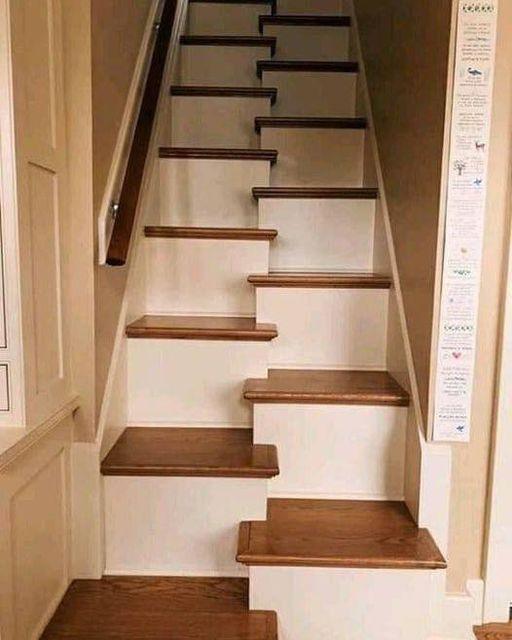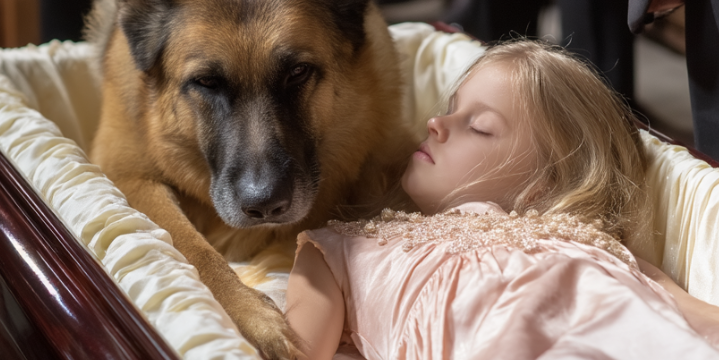Witches’ stairs, an unusual architectural design, gained traction on TikTok in March a few years ago. Despite their mysterious name, these stairs don’t have roots in superstition. They are instead a smart, space-saving solution that is both functional and visually appealing when properly built.

What Are Witches’ Stairs?
Witches’ stairs, also called “alternate tread stairs,” are designed to save space while still providing access between floors. They are often found in attics, lofts, and tiny houses—places where every inch counts. While the name might evoke images of folklore, the real purpose of witches’ stairs is purely practical.
How Do Witches’ Stairs Work?
The layout of witches’ stairs is unique because it combines space efficiency with functionality. Unlike traditional stairs, each step is only half as wide, and the steps are staggered. This arrangement allows the staircase to fit in narrow spaces while still enabling people to ascend or descend safely. In addition to saving floor space, these smaller staircases can double as storage for books, trinkets, or other items.
Scott Schuttner, the author of Basic Stairbuilding, explains that alternate tread stairs provide more tread area for each step, effectively making them safer despite their unconventional design. Witches’ stairs are also up to building codes and safety standards across the U.S. While typical staircases are about 3 feet wide, residential witches’ stairs are usually 27 to 30 inches wide, meeting the necessary regulations while occupying less space.
Real Origins of Witches’ Stairs
The modern concept of witches’ stairs can be traced back to 1985, when entrepreneur J.M. Lapeyre patented a metal version of the design. Lapeyre’s goal was to replace ladders in industrial settings, offering a safer alternative for tight spaces in warehouses, commercial ships, and oil rigs. Because of this, witches’ stairs are also referred to as “ship stairs” or “ship ladders.”
@xokelliscott walking up & down the stairs lol #spacesaverstairs #witchstairs ♬ original sound – kelli♡
However, the concept of staggered steps isn’t new. Historical records indicate that similar designs were used long before Lapeyre’s patent. An 1888 publication titled Monckton’s One Plane Method Of Hand Railing and Stair Building documents an early form of the alternating tread stair, showcasing its longstanding practicality.
Misconceptions About Witches’ Stairs
When witches’ stairs first trended on TikTok in 2021, many videos perpetuated an urban legend suggesting these stairs dated back to the 17th-century Salem witch trials. The legend claimed that people built these staircases in Massachusetts homes to prevent witches from entering, as witches supposedly couldn’t navigate the uneven steps. This theory has since been debunked, but it remains a popular myth.
Another rumor claims that Thomas Jefferson invented witches’ stairs, leading to the nickname “Jefferson stairs” or “Jeffersonian stairs.” However, there is no solid evidence linking Jefferson to this design. The original concept was primarily driven by the need for practicality rather than superstition.
Debunking the Myths
Despite their mysterious reputation, there is no historical basis for the idea that witches’ stairs were designed to ward off witches. Robin Briggs, a historian specializing in witchcraft, confirms that there is no mention of such stairs in historical records or folklore. While homes with witches’ stairs sometimes contained witch bottles or other protective charms, this was unrelated to the stair design itself.
The nearest documented superstition involved placing a broom over a door lintel, which was believed to trap a witch inside a room. But there is no equivalent belief regarding staircases. In reality, witches’ stairs are simply a practical solution for homes with limited space, not a tool for mystical protection.
Why Witches’ Stairs Are Still Relevant
Witches’ stairs remain a popular choice for modern homeowners seeking to maximize space without sacrificing access between floors. Their alternating tread design is not only efficient but adds a quirky, creative element to any home. As a functional and aesthetic alternative to full-size staircases, witches’ stairs offer a blend of practicality and charm.
Conclusion
Witches’ stairs are a fascinating mix of practicality and legend. While myths about their origins may persist, the real story behind these stairs is one of innovative design rather than witchcraft. Whether you’re intrigued by their odd name or their space-saving benefits, witches’ stairs are a unique option for compact living. Despite the folklore, their true magic lies in how well they work for small spaces, making them a clever choice for modern homeowners looking to make the most of every square inch.





